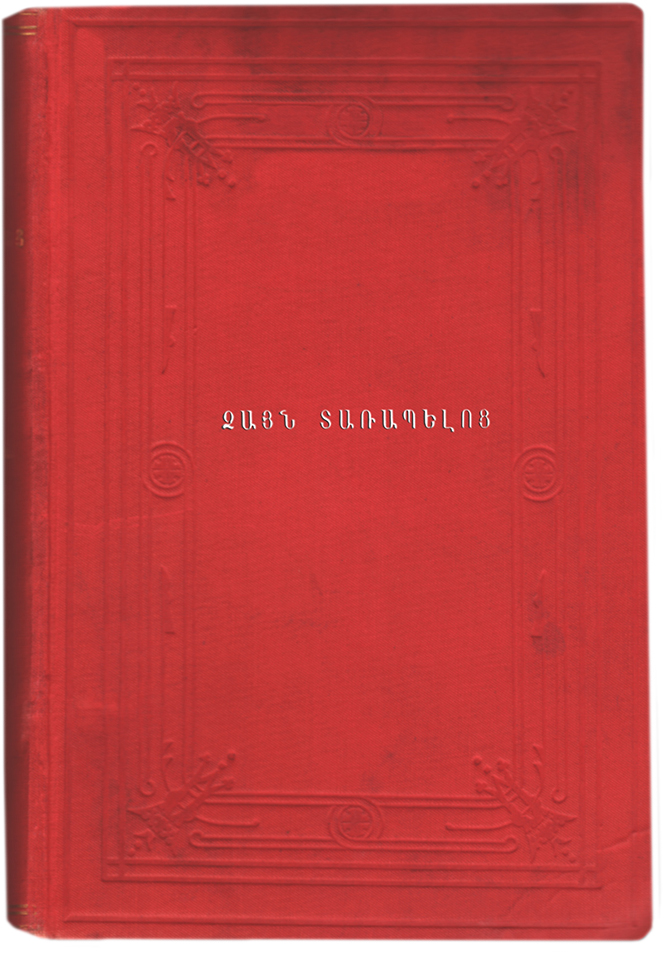23.04.2015
 Towards the 100th anniversary of the Armenian Genocide the Armenian Genocide Museum-Institute is launching “A book of the month” project. Books will be selected very carefully: they must be the memoirs of the Armenian Genocide survivors, research papers and other publications of great importance. The aim of this project is to introduce the readers with rare and still unknown works related to the topic to make the readers aware of the subject and provide an in-depth knowledge about the Armenian Genocide.
Towards the 100th anniversary of the Armenian Genocide the Armenian Genocide Museum-Institute is launching “A book of the month” project. Books will be selected very carefully: they must be the memoirs of the Armenian Genocide survivors, research papers and other publications of great importance. The aim of this project is to introduce the readers with rare and still unknown works related to the topic to make the readers aware of the subject and provide an in-depth knowledge about the Armenian Genocide.
“The Voice of Anguish” by Petros Tonapetyan is a book of April.
“The Voice of Anguish” is a collection of the letters, written on the routs of deportation and exile by 353 Armenian refugees sheltered in Syrian deserts and Caucasus. In the introduction the Petros Tonapetyan, who composed the book, mentions, that “The author of the book is not just one person but a few hundred, but today they do not exist, except few of them”.
The book is published in Paris, in 1922, in Hakob Tyurapian publishing house, 500 pages.
In the beginning of the book the letter of Layard, Ambassador of Great Britain to the Ottoman Empire, to Prime Minister Gladstone is presented (27 April 1880 “Blue Book”), where the ambassador stresses, that in order to regulate the situation of the Armenian minority in the Ottoman Turkey, we need to make changes in the Empire. Tonapetian presents the letter of the Armenian Catholicos Hovannes directed to Constantine, the Byzantine emperor, asking his help to save the Armenian Highlands from warlike tribes. The names of the writers, grammatical and stylistic mistakes are preserved identical; they are not printing defects. The authors of these letters are the Armenian eyewitnesses of the Armenian Genocide, so this book is a documentary evidence of great importance. Some parts from the diary of Ismail Hakki, a Turkish eyewitness, is also presented in this book, who witnessed the Armenian massacres and deportation during traveling from Constantinople to Baghdad (October 1915).
Petros Tonapetian, a writer, publicist, translator, British censor of the Armenian correspondences, who had collected the letters of survivors and published them in “The Voice of Anguish”.
“My dear,
I will briefly present the sufferings of the Armenian population in Tokat; first they are dividing the people into three parts - young, adult and old - than they are collecting them part by part at night by the command of the government and slaughter them. On the next day, the government is collecting and throwing them like sheep slaughterhouse in a place called Ghazakyol at the end of the city. Here they had made a big hole and filled it with lime, throwing the poor Armenians into that hole…”.
K. Yarmoian 30 February 1917, Baghdad (letter No 36)
“My darling,
During the deportation, when we came out of Van, naked and starving, we weren’t able to take at least one cloth with us, but only what was on us; tattered and old had been completely worn out. After 14 days of suffering, we reached the Russian land; hungry and without a penny, but here I had a severe illness, I was close to death, at that time we were in Igdir… than we reached Tbilisi, I was homeless and unprotected so I had to give my children to the orphanage…”.
Almast Almeian, 30 April 1917, Tbilisi (letter No 117)





